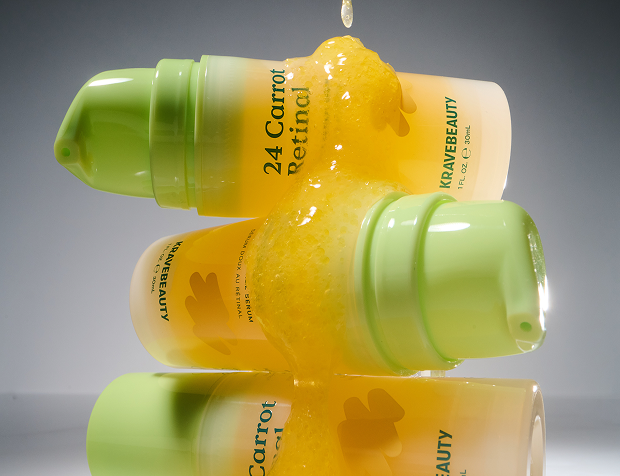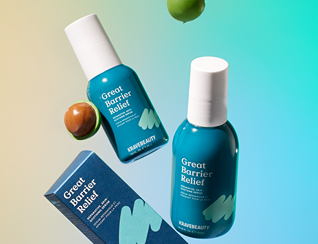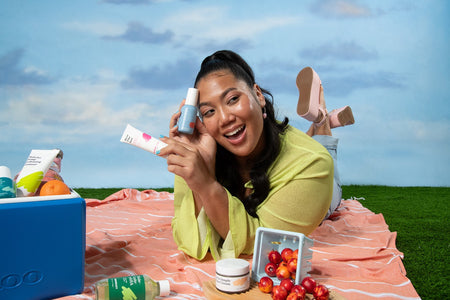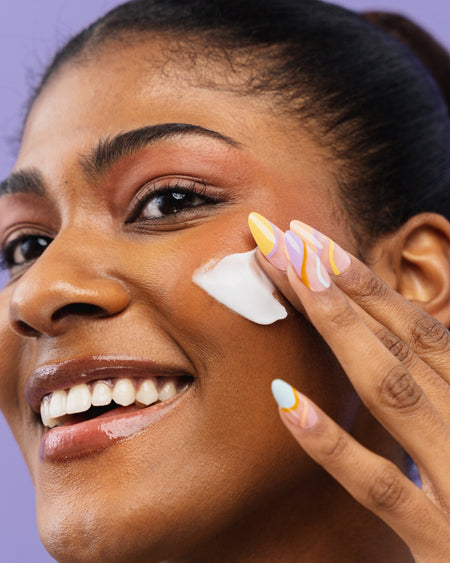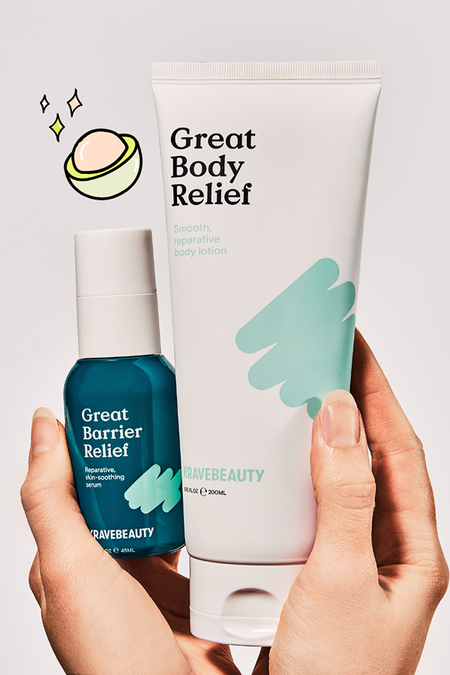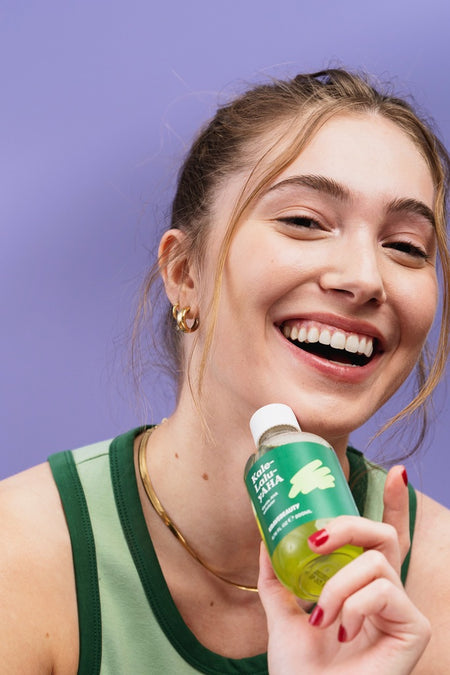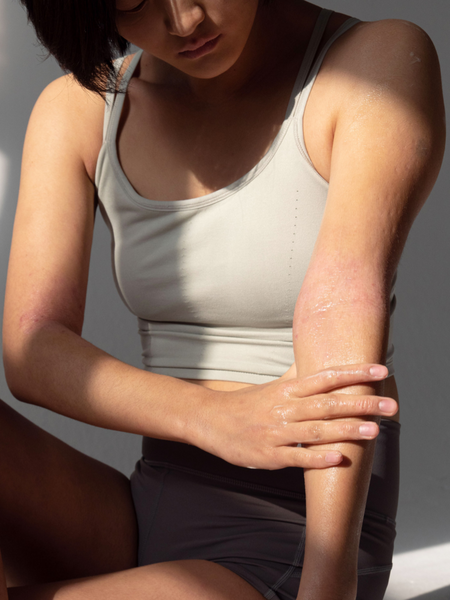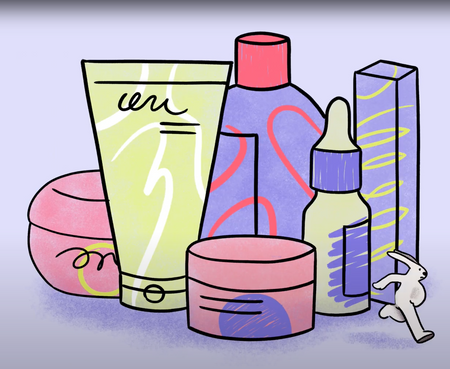Acne Series: Demystifying Acne

Starting this week we’re doing a deep dive into the world of acne.
I’m sure you’ve heard that there are different types of acne, but every week it seems like scientists find another culprit for the cause and it’s impossible to keep track! All while this is happening, the beauty and skincare industry also tell you about the million things you are doing wrong to your skin. Who are we supposed to believe?? Navigating the world of acne is as daunting as it is complex. We don’t have all the answers, but we can equip you with a survival guide so that you’re not alone in your journey!
Before you can start to tackle acne, you have to truly understand what it is. The thing with acne is, there’s always advice coming from every direction: scientists, parents, doctors, beauty bloggers, skincare marketing, etc. and while there are bits of truth here and there, it’s mostly masked by a lot of noise and misdirection. Sometimes we even find ourselves following advice without really knowing why. So let’s start with the basics, what is acne?
The definition of acne is inflammation of the sebaceous gland and/or hair follicle, and the skin around it. There is often a misconception that the respective types of acne (comedonal, hormonal, etc.) are radically different from each other, but that may not necessarily be true. While there are a million different factors that lead to the actual pimple, whatever the cause, the final manifestation is simple - a clogged pore resulting in inflammation.
Here are the classifications for acne:
1. Non-inflammatory acne
These include blackheads and whiteheads. They’re so-called non-inflammatory because the skin around the clogged pore is not usually inflamed, red or raised. The dead skin cells and oil simply can’t get out of the little pore.
A) Whiteheads aka closed comedones
In whiteheads, the trapped skin cells and oil cannot escape because the top of the pore is closed. This gives the appearance of a white dot, and the dot itself (but not the skin around it) can be slightly raised as it tries to push its way out.
The trapped dead skin cells and oil mentioned above are actually the favorite food of some strains (the acne-causing strains) of the bacteria P. acnes. When these bacteria go into the pore and start to eat and live and reproduce there, the surrounding skin becomes inflamed, causing inflammatory acne, which include papules, pustules, nodules and cysts, commonly grouped by the layman’s term “pimple”, which we tend to think of as different from black and whiteheads.
A) Pustules
This is the typical pimple that most of us are familiar with. When your clogged pore has endured too much inflammation, either from excess trapped sebum and skin cells or from bacteria infestation, the walls of the pore may break down, and the surrounding skin will become red and inflamed. This whole area will become raised and pushed against the surface, resulting in a red circle with a white or yellow center that feels a bit squishy. The white/yellow liquid is pus, which consists of your immune cells that show up to fight the infection.
B) Papules
In papules, a similar situation happens as the above, but the inflammation is either a bit smaller or a bit deeper in the skin. It’s not as raised or close to the surface, however the skin is still inflamed, so it results in a pinkish red firm bump with no white center (also known as a headless pimple).
C) Nodules
In nodules, the inflammation starts even deeper in the skin, and with time or further irritation, it can grow to a considerable size. These are the deep, big, red, painful bumps with no head.
D) Cysts

Source: http://www.ayushveda.com/dietfitness/different-types-of-acne/
As you can see, even though there are a lot of appearances of acne, they all have a common factor: a clogged pore. Therefore, no matter the cause of your kind of acne, in the end we’re just trying to prevent our pores from clogging. It’s that simple. But that doesn’t mean it’s easy.
For example: You may have previously thought that the acne you would get from a comedogenic product is different from the acne you would get from a hormone imbalance, i.e. you’d get black and whiteheads from a comedogenic product, but hormonal acne usually show up as cysts. The truth is, if a comedogenic product clogs your pore, bacteria travels into it, and the inflammation is not managed, a cyst can very well appear. Hormones can influence how much oil is produced and how gloopy it is, but depending on where it gets trapped, papules and pustules are just as likely to happen as cysts.
Yes, it’s important to make good diet and lifestyle choices, but it’s more important to know why. These choices help you regulate your oil production and risk of inflammation in an effort to lower the chances of 1) getting a clogged pore and 2) having a clogged pore inflame into a pimple. But you can also prevent acne from the outside by keeping your pores clear - not by picking/squeezing of course! Make sure you have a functioning cell-turnover with regular gentle exfoliation that keeps your barrier intact.
Now that you have a fundamental understanding of acne, next week we will delve into some causes and advice we always hear about acne, and how they complete the picture.
